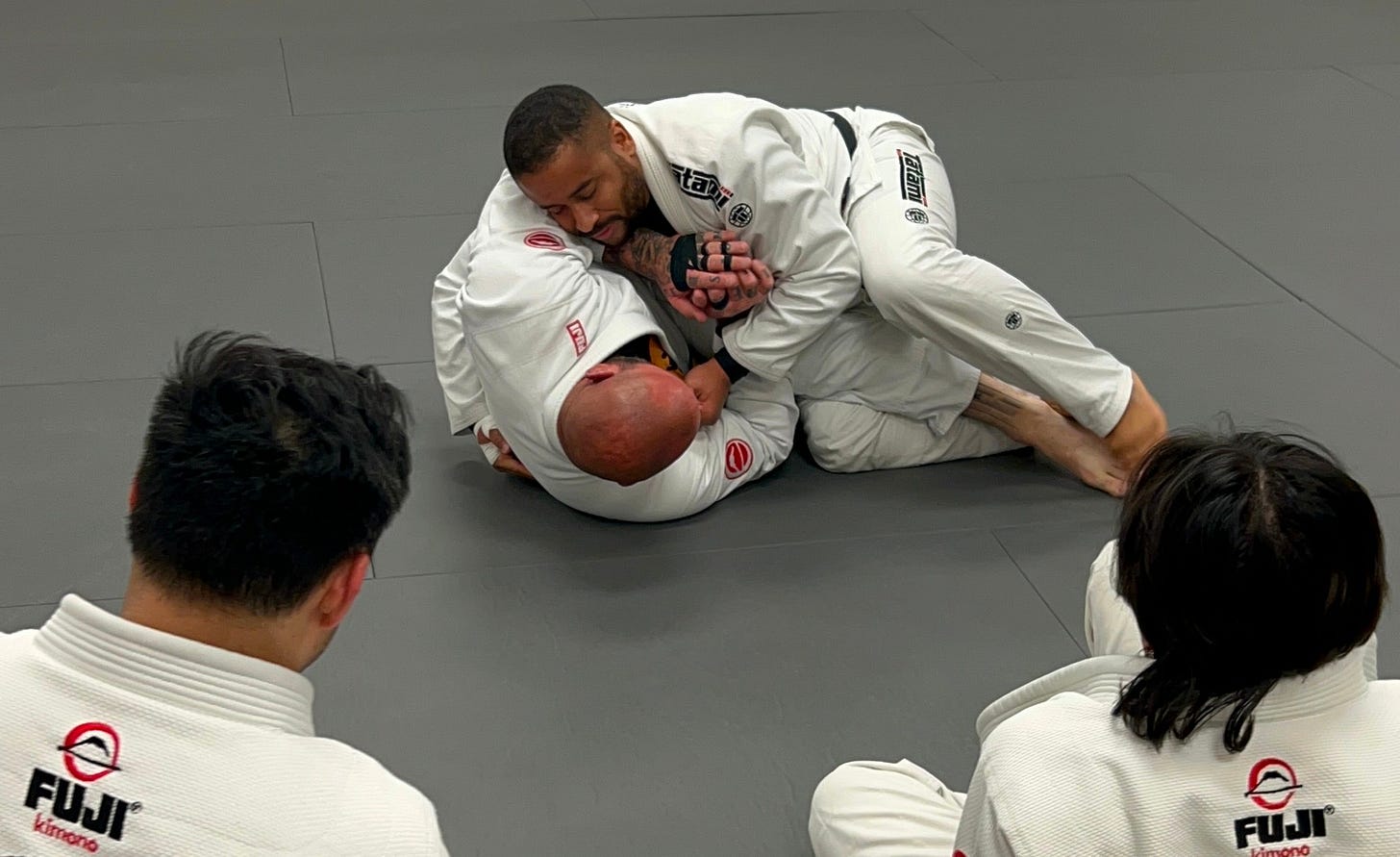The Pregnant Pause
How to Use Strategic Stillness

The Pregnant Pause is a tactic that I use to generate both physical and mental discomfort. If I was to define it, it would be a deliberate moment of inactivity or stillness that creates tension, invites action, or disrupts my opponents rhythm.
This is different than stalling or hesitation. It’s strategic and full of intention.
It’s Purpose
Draw Out Reactions - What I want from the position(s) is to elicit a response from you that I can then take advantage of.
Reset The Tempo - Against high energy opponents, I want to neutralize their pace and movement. My hope is catch my breath or gather my thoughts while preoccupying yours.
Disguise My Intentions - I will often create what will look like an opening that encourages my opponent to respond. In reality, I’ve funneled you into a choke point with the odds in my favor.
False Sense of Safety - A common ‘gentleman’s agreement’ is that once the pass occurs, a new position begins. For example, bottom of side. Someone might welcome the guard pass for the safety of framed side control. The reality is, that I’m going to generate enough pressure that you’ll wish I hadn’t passed.
The Psychological Impact
We often talk about the physical impact of weight and pressure, missing how much the psychological element plays a part in all this as well.
Creates Anxiety - That looming impending doom is top tier. I have always hated that moment when I have someone on my chest slowly wrapping up an arm knowing I can’t defend it. Your breathing changes, heart races, and all you can think about is what will happen and not what I should make happen.
Breaks Rhythm - Students thrive on familiar patters of success. When you’re able to shatter that, the most common response is usually desperation.
Where Is It Most Effective?
While this could technically be used from the bottom positions, I personally love to utilize the pregnant pause from pinning positions. My favorites are top of Half, Side Control, Mount, and North South.
I also like to use this approach in the in between zones. For example, passing transitions and submission attacks. While passing, I will often slow the pass down and apply punishing downward pressure or allow them to begin to formulate a defense just to crush it.
You can attack submissions a similar way. When I’m in S-Mount and almost have the arm free for the armbar, I might hold the position. Making them carry my weight or if the opponent is too strong, I may hold the position with the structural integrity of my body. Forcing them to struggle for a bit.
Lastly, any time I pause during a submission, I might even switch to something else entirely. Like a wrist lock.
Thank you for reading.
David Figueroa-Martinez
Founder, DFM Coaching
Coach | Writer | Grappler
DFM Coaching is dedicated to helping you overcome mental hurdles and achieve your full potential in BJJ. Whether through in-person instruction, seminars, private lessons, remote coaching, or video analysis, I provide personalized support tailored to your needs. Keep pushing forward, and let’s grow together!
🔊 EPISODE 1: “Why Tapping is a Skill, Not a Shame”
Rewiring how you view loss, pain, and quitting
• Reframe tapping as a decision, not a defeat
• Learn why pain is feedback—not failure
• Discover how the tap protects your longevity and growth
🔊 EPISODE 2: “From Proving to Improving”
Outgrowing gym performance anxiety
• Stop rolling to impress and start rolling with intent
• Let go of fear-driven intensity and chase progress
• Build quiet confidence rooted in awareness, not approval
🔊 EPISODE 3: “Respect Doesn’t Mean Submission”
How to train assertively and kindly
• Stand your ground while being a safe partner
• Hold standards when no one’s watching
• Build a balanced training style—push hard, protect spirits




